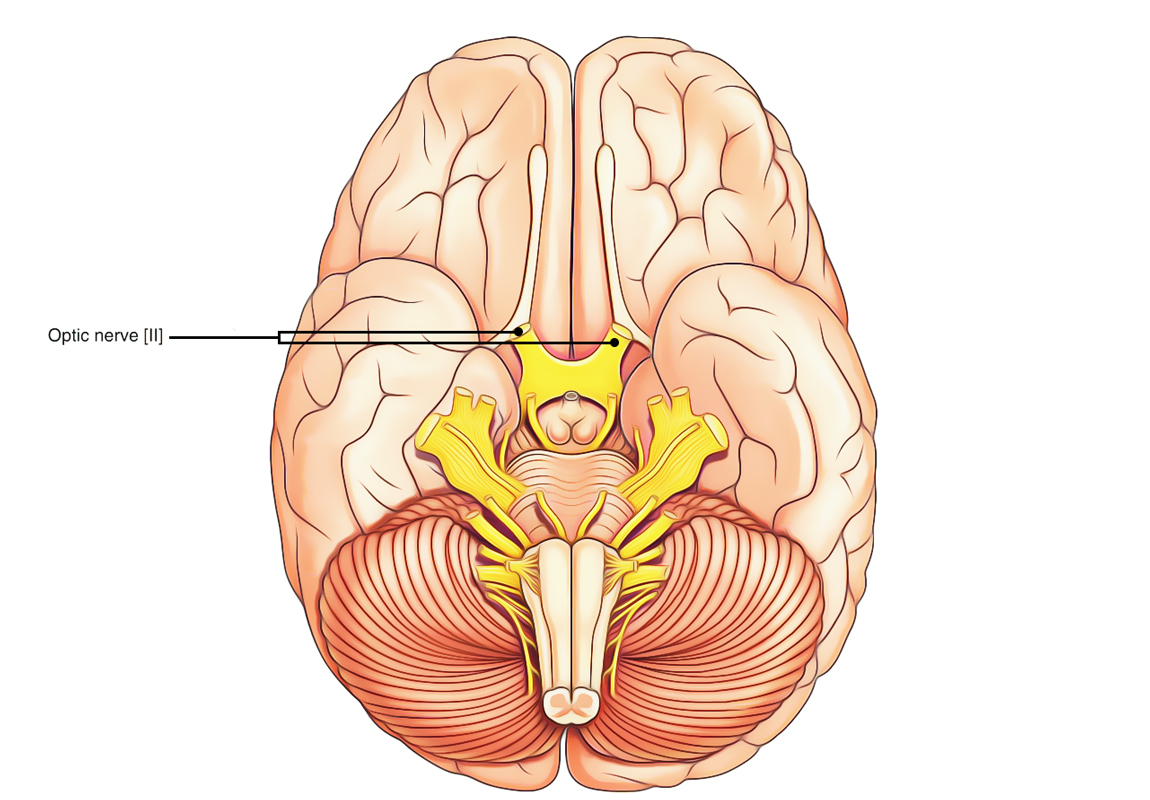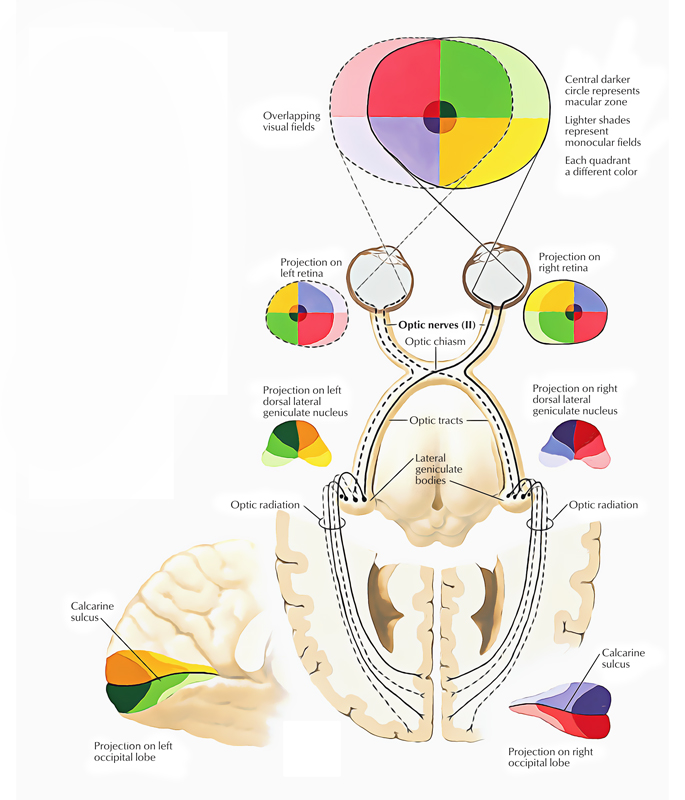It’s just sensory and responsible for eyesight; thus, it’s also termed the nerve of sight. Optic nerve is the 2nd cranial nerve.

Optic Nerve
Unique Features
It’s truly a tract of brain for it grows as an outgrowth of diencephalon during embryonic life. The optic nerve isn’t a true peripheral (cranial) nerve. For this reason, it presents the following unique features:
- It is composed of second-order sensory neurons.
- Its fibres are myelinated by oligodendrocytes.
- It’s encircled by meninges.
- Its fibres can not regenerate if cut/damaged.
Functional Component
Special somatic afferent fibres: They carry perception of vision from the visual field of the corresponding eye.
Course and Connections
The fibres of optic nerve originate from ganglion cells (second order neurons) in the nervous layer of the retina of the eyeball, pierce outer layer of retina, choroid and sclera to make the eyeball. Promptly after emerging from the eyeball, converge toward the optic disc in the posterior pole of the eyeball, the fibres unify to create the optic nerve which enters posteromedially via the posterior half of the orbit and enters the middle cranial fossa via the optic canal.
In the middle cranial fossa, optic nerves of 2 sides unite to create the optic chiasma. The area of optic chiasma consists of crossed fibres from the medial/nasal halves of the retina of both eyes, while the lateral region is created from fibres from the lateral/temporal half of the retina of the ipsilateral eye. Diverging from the chiasma are the optic tracts.
Majority of the fibres of the optic tract relay in the lateral geniculate body. The third-order neurons originate in the lateral geniculate body, run in the retrolenticular part of the internal capsule and create optic radiations. The fibres of optic radiation terminate in and around the calcarine sulcus of the occipital lobe (visual cortex). A number of the fibres from the lateral geniculate body reach the pretectal area of the midbrain and create a part of the nerve pathway for light reflex. Hence, visual pathway contains the following components in craniocaudal sequence: Retina > optic nerve > optic tract > lateral geniculate body > optic radiation > visual cortex.

Cranial Nerve: Course and Connections
The optic nerve is 4 cm in length. It’s split into 3 parts: (a) intraorbital part, (b) canalicular part and (c) intra-cranial part. It’s enclosed by 3 meninges of the brain. The thick fibrous dural sheath of optic nerve combines with the sclera of the eyeball. The subarachnoid space including CSF encompasses the optic nerve and is constant with the subarachnoid space of the brain.
Clinical Significance
Ipsilateral Complete Blindness
It might take place because of damage of optic nerve or blockage of central artery of retina. The compression of optic nerve ends in optic atrophy, which later results in ipsilateral absolute blindness named anopia.
Papilledema
The central vein of retina is enclosed in the meninges of the anterior part of optic nerve that is encompassed by CSF in the subarachnoid space. Consequently, an increased CSF pressure inside the cranial cavity impedes the return of venous blood from the retina by pressing the central vein of retina and its tributaries. This ends in swelling of optic disc owing to edema referred to as papilledema. The papilledema is precious clinical signs of an increased intracranial pressure.
Clinical Testing of Optic Nerve
The optic nerve is analyzed medically by performing evaluations for visual acuity, colour perception and loss of eyesight in distinct visual fields.

 (60 votes, average: 4.70 out of 5)
(60 votes, average: 4.70 out of 5)